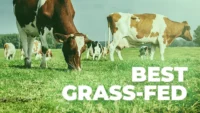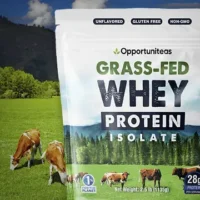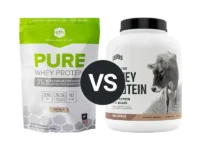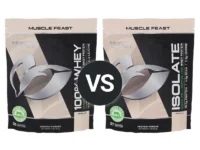Knowledge BaseYou're Questions Answered
BACK
What are the benefits of using grass-fed protein powder?
Grass-fed protein powder is a type of protein supplement derived from the milk of grass-fed cows. Here are some potential benefits of using grass-fed protein powder:
- Higher nutrient content: Grass-fed protein powder is believed to contain higher levels of nutrients compared to conventional protein powders derived from grain-fed cows. Grass-fed cows are known to produce milk that is higher in omega-3 fatty acids, conjugated linoleic acid (CLA), and antioxidants, which may have health benefits.
- Improved protein quality: Grass-fed protein powder is also believed to have a superior amino acid profile compared to protein powders derived from grain-fed cows. This is because grass-fed cows consume a natural diet that is rich in essential amino acids.
- Reduced exposure to hormones and antibiotics: Grass-fed cows are not given hormones or antibiotics, which are commonly used in conventional farming practices to increase milk production and prevent disease. By choosing a grass-fed protein powder, you can reduce your exposure to these potentially harmful substances.
- Environmentally sustainable: Grass-fed farming practices are believed to be more environmentally sustainable compared to conventional farming practices. Grass-fed cows are allowed to graze on natural pastures, which reduces the need for artificial feed and reduces the environmental impact of farming.
It is worth noting that there is limited research specifically on the health benefits of grass-fed protein powder, and more studies are needed to confirm these potential benefits. However, research on the benefits of grass-fed dairy products, in general, is promising.
Was this answer helpful? Let us know!
Like
References:
- Daley, C. A., Abbott, A., Doyle, P. S., Nader, G. A., & Larson, S. (2010). A review of fatty acid profiles and antioxidant content in grass-fed and grain-fed beef. Nutrition Journal, 9(1), 1-12.
- French, P., O'Riordan, E. G., Monahan, F. J., Caffrey, P. J., & Mooney, M. T. (2000). The fatty acid composition of muscle fat and subcutaneous adipose tissue of grazing heifers supplemented with a high-concentrate diet. Livestock Production Science, 63(3), 201-211.
- Ip, C., Dong, Y., & Scimeca, J. A. (1994). Identification of a novel dietary factor that induces apoptosis and cell cycle arrest. Carcinogenesis, 15(8), 1511-1513.
- Kelsey, J. A., Corl, B. A., Collier, R. J., & Bauman, D. E. (2003). The effect of breed, parity, and stage of lactation on conjugated linoleic acid (CLA) in milk fat from dairy cows. Journal of Dairy Science, 86(8), 2588-2597.
Add to this Answer
Related Questions
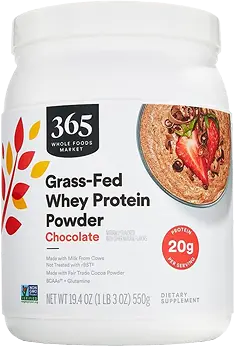
Disclosure
Your Answer
Do you have a suggestion to improve the answer? Please detail your suggestions and provide any references to information that may support your answer if available.
The content on this site has not been written, reviewed or endorsed by a medical professional. We assume no liability for the misuse of supplements and recommend you review the label of any product, as well as consulting with your health care professional.
We are a participant in the Amazon Services LLC Associates Program, an affiliate advertising program designed to provide a means for us to earn fees by linking to Amazon.com and affiliated sites.
We are a participant in the Amazon Services LLC Associates Program, an affiliate advertising program designed to provide a means for us to earn fees by linking to Amazon.com and affiliated sites.
© 2025 ProteinPowder.com
